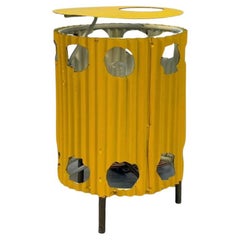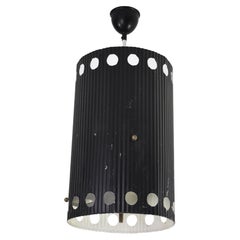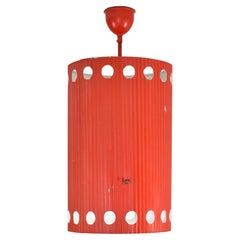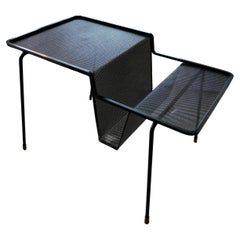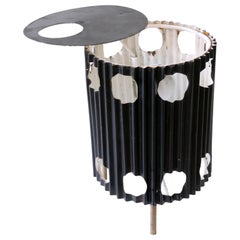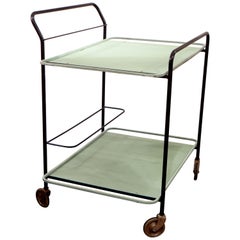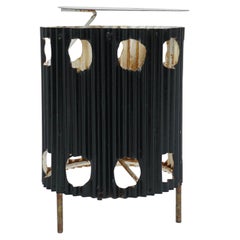Mathieu Mategot Java
Vintage 1950s French Modern Table Lamps
Metal, Iron
Vintage 1950s French Mid-Century Modern Chandeliers and Pendants
Metal
Vintage 1950s French Mid-Century Modern Chandeliers and Pendants
Metal
Vintage 1950s French Mid-Century Modern Side Tables
Metal, Brass
Vintage 1950s French Mid-Century Modern Table Lamps
Metal
Recent Sales
Vintage 1950s French Industrial Serving Tables
Metal
Vintage 1950s Table Lamps
Metal
Vintage 1950s French Magazine Racks and Stands
Steel, Brass
Vintage 1950s French Mid-Century Modern Table Lamps
Metal
Vintage 1950s French Table Lamps
Sheet Metal, Brass, Steel
Vintage 1950s French Mid-Century Modern Carts and Bar Carts
Metal
Vintage 1960s Magazine Racks and Stands
Vintage 1950s French Mid-Century Modern Magazine Racks and Stands
Steel
Vintage 1950s French Mid-Century Modern Side Tables
Mid-20th Century French Mid-Century Modern Magazine Racks and Stands
Metal
Vintage 1950s Table Lamps
Metal
Vintage 1950s French Mid-Century Modern Table Lamps
Metal
Vintage 1950s French Mid-Century Modern Table Lamps
Metal
Vintage 1950s French Mid-Century Modern Side Tables
Metal
20th Century French Mid-Century Modern Table Lamps
Metal, Sheet Metal, Brass
Vintage 1950s French Mid-Century Modern Magazine Racks and Stands
Steel
Vintage 1950s French Mid-Century Modern End Tables
Vintage 1950s French Home Accents
Vintage 1950s French Decorative Objects
Vintage 1950s French Mid-Century Modern Magazine Racks and Stands
Vintage 1950s French Magazine Racks and Stands
Steel, Brass
Vintage 1950s French Mid-Century Modern Magazine Racks and Stands
Metal
Vintage 1950s French Mid-Century Modern Magazine Racks and Stands
Metal
People Also Browsed
2010s American Mid-Century Modern Wall Lights and Sconces
Brass, Bronze, Enamel, Nickel
21st Century and Contemporary Swedish Mid-Century Modern Table Lamps
Textile
2010s American Mid-Century Modern Table Lamps
Brass
21st Century and Contemporary Italian Mid-Century Modern Wall Mirrors
Brass
Mid-20th Century Italian Settees
Cotton, Wood
2010s American Modern Stools
Wood, Oak
Vintage 1960s Italian Post-Modern Vanities
Metal, Brass
Vintage 1970s Italian Post-Modern Beds and Bed Frames
Steel, Chrome
Mathieu Mategot Java For Sale on 1stDibs
How Much is a Mathieu Mategot Java?
Mathieu Matégot for sale on 1stDibs
With their curvaceous metal surfaces and shapes often resembling sheets of folded paper, Mathieu Matégot's inspiring furniture and lighting designs are easily recognizable and highly sought after by collectors. By working with perforated sheet metal and metal tubing, the Hungarian-born French architect, artist and designer — who is known by aficionados for his “rigitulle” technique — created tables, chairs and decorative objects that are celebrated works of French modernism and make a statement in any interior.
Matégot attended the Budapest School of Fine Arts and Architecture. He graduated in 1929 and traveled before settling in Paris in 1931, where he worked as a window dresser for department stores and as a set designer for cabaret halls.
In 1939, Matégot joined the French army in resistance to invading Nazi forces. He was soon captured and sent to work in a German factory. It was at this factory where Matégot became familiar with the materials and techniques that would inform and inspire his trademark rigitulle method.
After the war ended, Matégot opened a workshop in Paris and began to create handcrafted furniture that didn't conform to established styles of the time. Matégot explored merging traditional and non-traditional materials — he worked with formica, glass and natural materials such as rattan — and engaged in other forward-looking experiments. Matégot soon patented his career-defining rigitulle technique and material, which saw the designer working with metal tubing and perforated metal sheets and producing thin, airy folds into the metal as if he were manipulating fabric or paper.
Many of Matégot’s designs for table lamps, pendants, tables and more are reflective of the rigitulle technique, but the best-known work that exemplifies this process is his elegant three-legged Nagasaki chair, which he exhibited in 1954 at the Salon des Artistes Décorateurs. The original Nagasaki chair gave way to a collection that included a stool and an armchair. Matégot’s Nagasaki dining chair has been reissued by Gubi and is part of the permanent collection at the Vitra Design Museum, which is home to one of the world’s most important furniture collections.
Matégot created a range of smaller items for the home — serveware, side tables and magazine racks, each distinctive in their fluid and organic forms — but halted his career in design and moved to Angers in the early 1960s in order to turn to creating art. Today he is known for his abstract tapestries as well as his furnishings.
Find vintage Mathieu Matégot furniture on 1stDibs.
